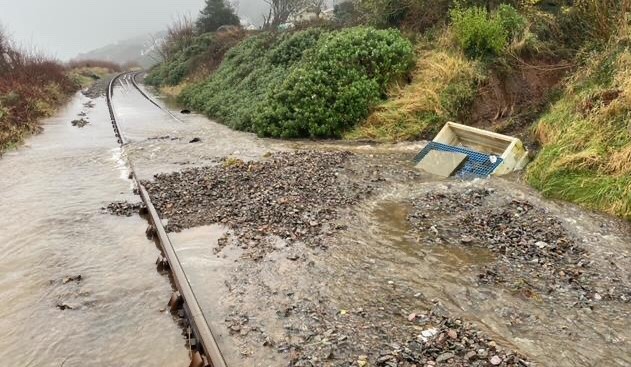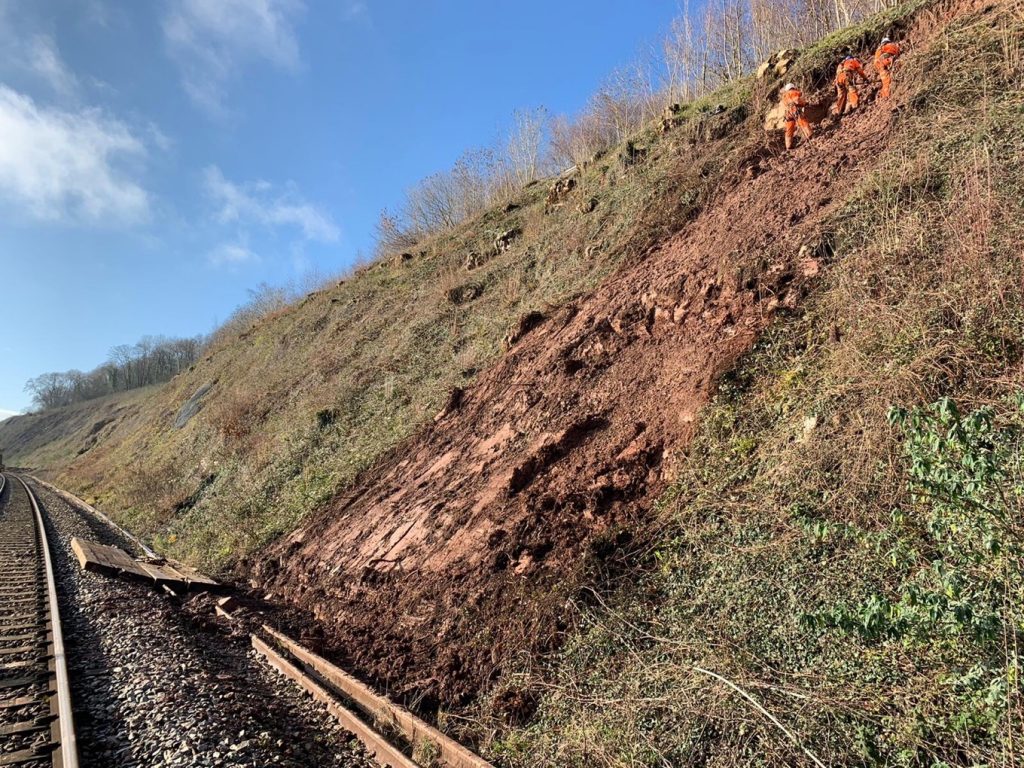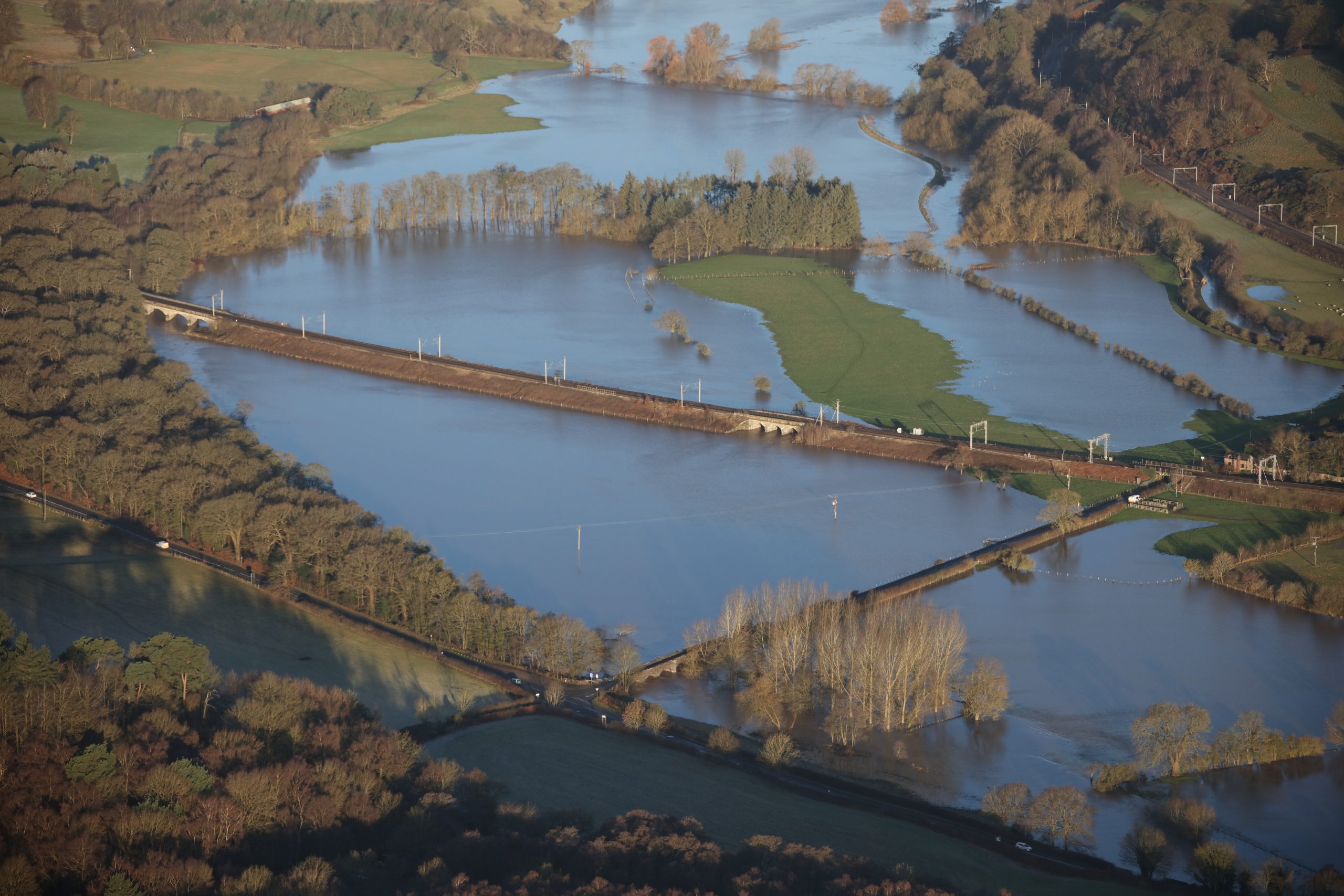Striking images taken by our helicopter have highlighted the impact of Storm Christoph in the past week.
Our dedicated Air Operations team is surveying the railway as floodwaters recede across the North West after Storm Christoph.
Initial signs show railway lines left submerged in recent days in Cheshire, Lancashire, Merseyside and Cumbria have little or no lasting damage after the extreme weather.
We’re carrying out sky-high inspections of the track on the West Coast Main Line, which runs from London to Scotland, and other routes around the North West of England.
Back on the ground much of the railway network is now open to trains as normal.
Gallery: Crewe Basford Hall depot after Storm Christoph, the Network rail helicopter and flooding in Warrington
How storms and flooding affect the railway
The effect of flooding on the railway and what we’re doing to reduce it
Our extreme weather action teams used high volume pumps during the storm to clear floodwater. This minimised damage to track, signalling equipment, cuttings and embankments.
Phil James, route director for the North West at Network Rail, said: “I’m extremely proud of my teams who’ve battled horrendous conditions to keep the railway safe for passengers and freight during Storm Christoph.
“We invest tens of millions of pounds making the railway more robust so it can cope when extreme weather events like this happen. It seems this preparation work on the ground has paid off – proven by today’s helicopter inspections from the skies and other aerial photos taken by drones in recent days.”
Recovery underway in Wales
A massive recovery effort is underway across large parts of the railway in Wales following huge amount of heavy and continuous rainfall brought on by Storm Christoph.
We’re working day and night to clear away debris from a landslip at Lydney, on the line between Chepstow and Gloucestershire.

Network Rail engineers are at the scene in Lydney and have begun to clear debris from the track and remove any unstable earth from the embankment.
Due to the hard-to-reach location of the landslip, rope-teams are working their way down the embankment to remove loose debris and earth with the use of hand tools.
The clean-up at Lydney is expected to take a week and Transport for Wales is providing a rail replacement service from Newport to Gloucestershire.
Other areas of the Wales & Borders route have had to close due to damage left after flooding, particularly in the North and North west.
We’re assessing significant damage at Knighton, on the Heart of Wales Line, and multiple areas of storm damage between Dovey Junction and Pwllheli, on the Cambrian Coast Line.
Further investigations took place over the weekend to determine when the lines could reopen.
Meanwhile, there have been several washouts of the track on the Conwy Valley Line, between Llandudno Junction and Blaenau Ffestiniog, which will require clean-ups or repairs.

Meanwhile, we reopened the lines at Rotherham Central on Friday 22 January after heavy rain flooded the tracks.
The lines closed on Wednesday 20 when Storm Christoph hit Yorkshire and river levels started to rise. Teams disconnected signalling cables and diverted trains between Meadowhall and Swinton before the railway flooded and sections of track were under water.
Our teams worked tirelessly to pump water away from the railway, carry out safety inspections and reconnect the signalling system, ready for services to resume.
Read more:
How storms and flooding affect the railway
The effect of flooding on the railway and what we’re doing to reduce it
Weather resilience and climate change on the railway




